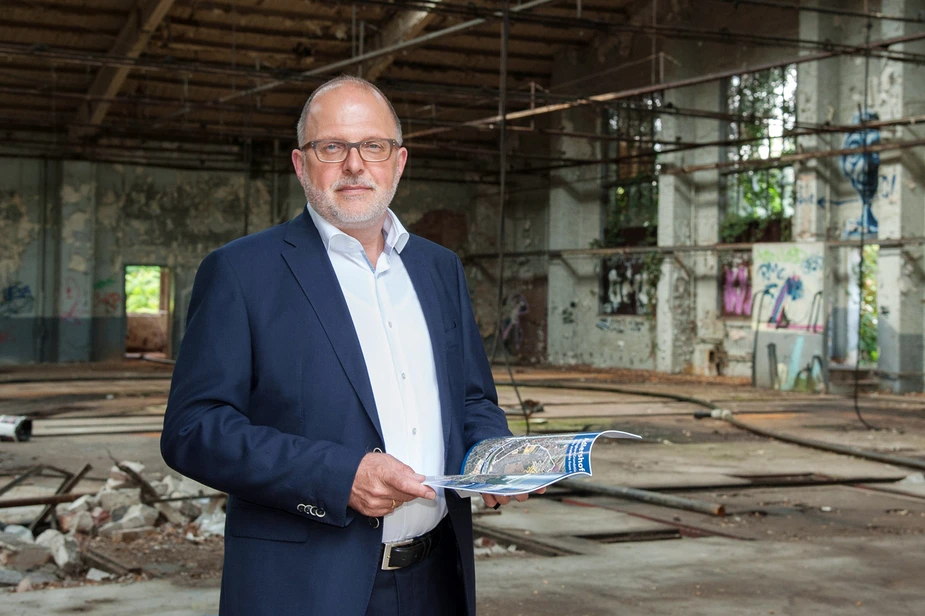Historical Land for Future Growth
The Reassigning of the „Müller Erben“ Premises on Groß-Berliner Damm
As a development agency, Adlershof Projekt GmbH presses ahead with the reassigning of the „Müller Erben“ premises on Groß-Berliner Damm. Tenacity is finally paying off: a future use of the area for both living and working seems ever more likely.
Being the birthplace of engine-powered flight in Germany, the site is considered the core of the technology hub as we know it today. However, the splendour of entrepreneur and inventor Arthur Müller’s age has long faded. Today, a wasteground covered with dilapidated shacks stretches along Groß-Berliner Damm in the northeastern section of the development zone. Owned by a community of heirs, the area was in fact written off by some. Though not by the inheritors and Adlershof: after long and in part tough negotiations, an agreement between both is about to be settled, providing yet another boost to the entire location.
Walter Leibl, Chief Executive Officer of Adlershof Projekt GmbH, expects the development plan for the approx. 214,000 square metres sized area to be home and dry by the end of 2018: “We envisage a mix of industry and residential living typical of Johannisthal,” he explains. Apart from new industrial real estate along Groß-Berliner Damm, the area is intended for the creation of much-needed, partly funded, housing space. Situated not far from the landscape park, the spot is quite attractive. “This too will help enliven the science location,” Leibl adds. The area will gain additional charme due to the inclusion of several heritage buildings dating back to Arthur Müller’s aviation era.
Wherever possible, these buildings will be renovated and put to wise use. Leibl envisions the quarter to become a new entrance gate as seen from the direction of Schöneweide – not only because it will be a busy and handsome place in the future, but also due to the fact that it will make for a comfortable connection for residents and employees using the to-be-extended tram line which will eventually run along Groß-Berliner Damm all the way to Schöneweide. There will even be an M-tram for notorious night owls. Moreover, Adlershof will soon have a second train station so that prospectively, the S-Bahn depot Schöneweide will be accessible from either side. Wagner-Régeny-Straße will be extended to a total length of a little more than two kilometres. This will mark an in improvement for properties located on the “Gleislinse” area which can then be placed on the market.
Flat hunters and industrialists will not be the only ones to profit from the persistence of the project developers: “An effective link between Adlershof and Schöneweide is in the making,” Leibl sums up the effect in terms of urban planning. The improved connection to the University of Applied Sciences (HTW Berlin) will create further impulses for Adlershof’s institutes and businesses. Likewise, the newly developed industrial sites will set the course for further growth.
Until then, however, there’s still a lot of work in store for developers: contaminated by prior usage, the soil needs to be replaced. New roads are being built for the development of the site. It is only thanks to the funding from the joint task “Verbesserung der regionalen Wirtschaftsstruktur“ (GRW) that this major effort can be undertaken with success.
By Chris Löwer for Adlershof Special
